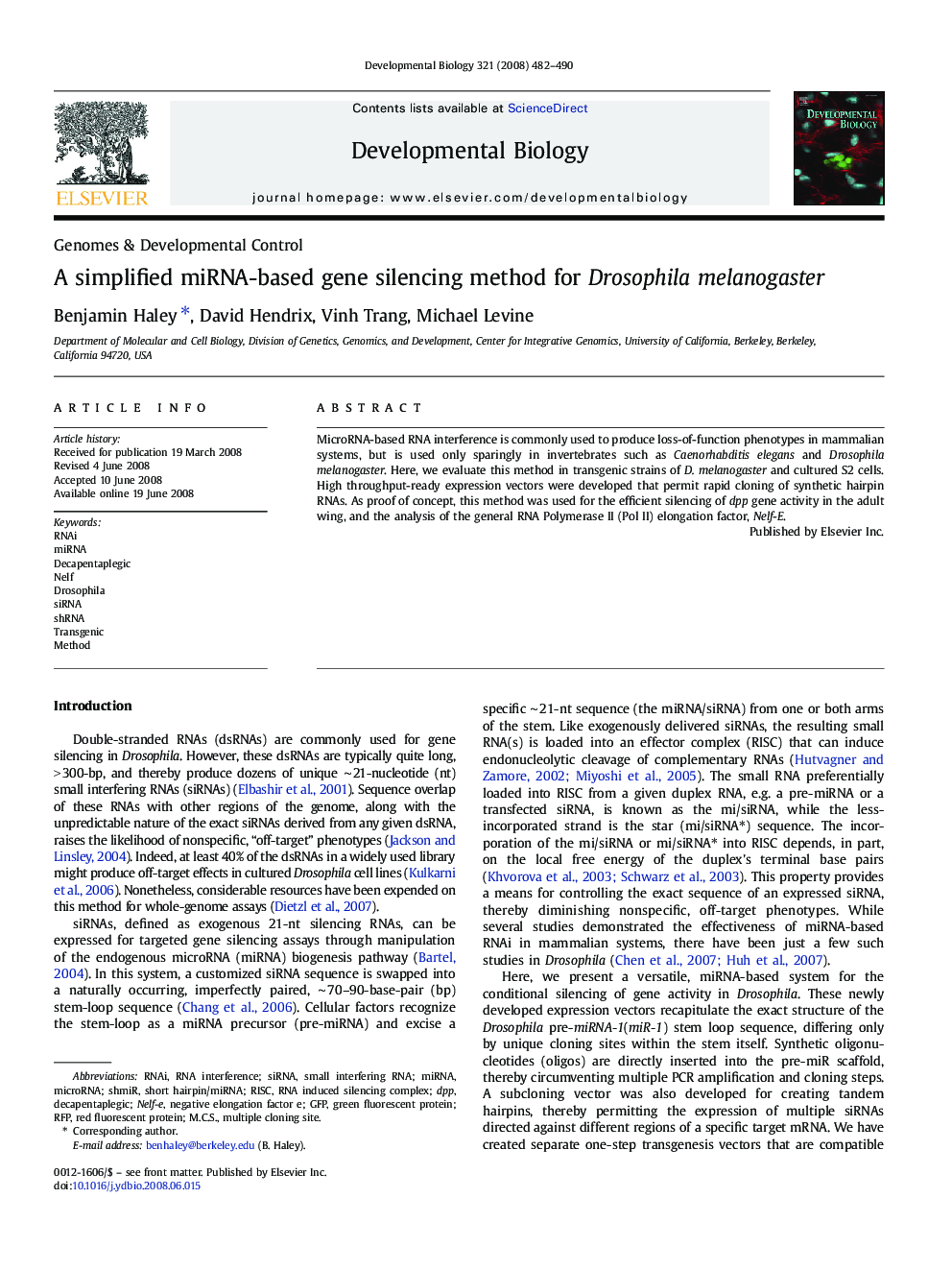| Article ID | Journal | Published Year | Pages | File Type |
|---|---|---|---|---|
| 2174373 | Developmental Biology | 2008 | 9 Pages |
Abstract
MicroRNA-based RNA interference is commonly used to produce loss-of-function phenotypes in mammalian systems, but is used only sparingly in invertebrates such as Caenorhabditis elegans and Drosophila melanogaster. Here, we evaluate this method in transgenic strains of D. melanogaster and cultured S2 cells. High throughput-ready expression vectors were developed that permit rapid cloning of synthetic hairpin RNAs. As proof of concept, this method was used for the efficient silencing of dpp gene activity in the adult wing, and the analysis of the general RNA Polymerase II (Pol II) elongation factor, Nelf-E.
Related Topics
Life Sciences
Biochemistry, Genetics and Molecular Biology
Cell Biology
Authors
Benjamin Haley, David Hendrix, Vinh Trang, Michael Levine,
